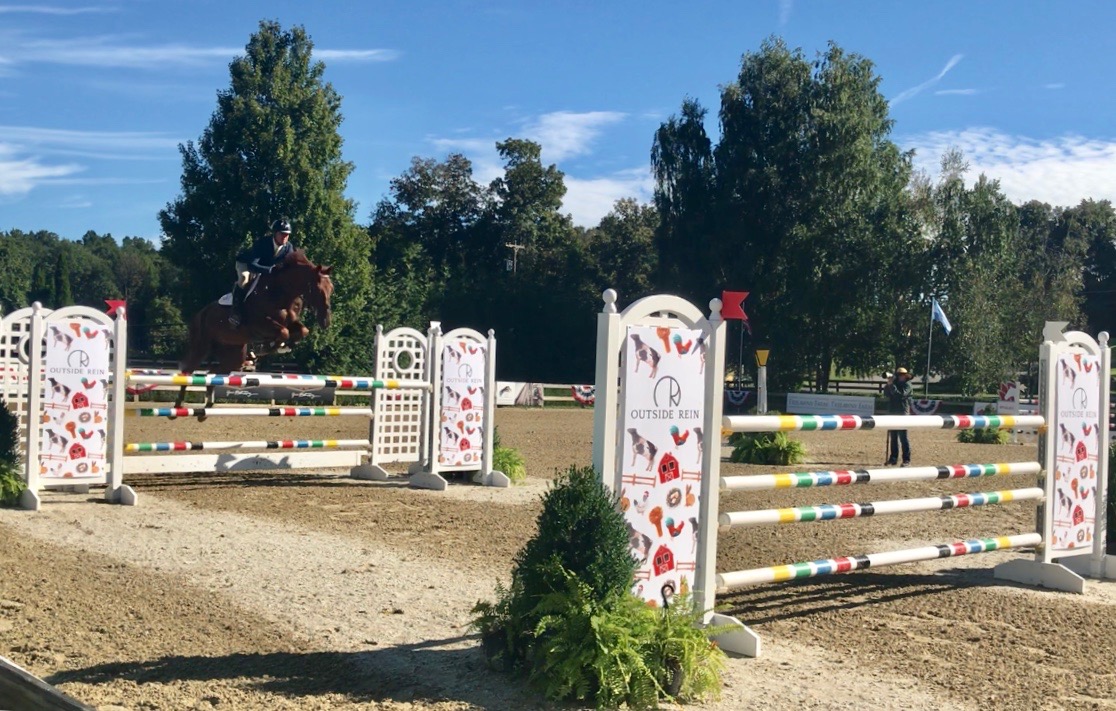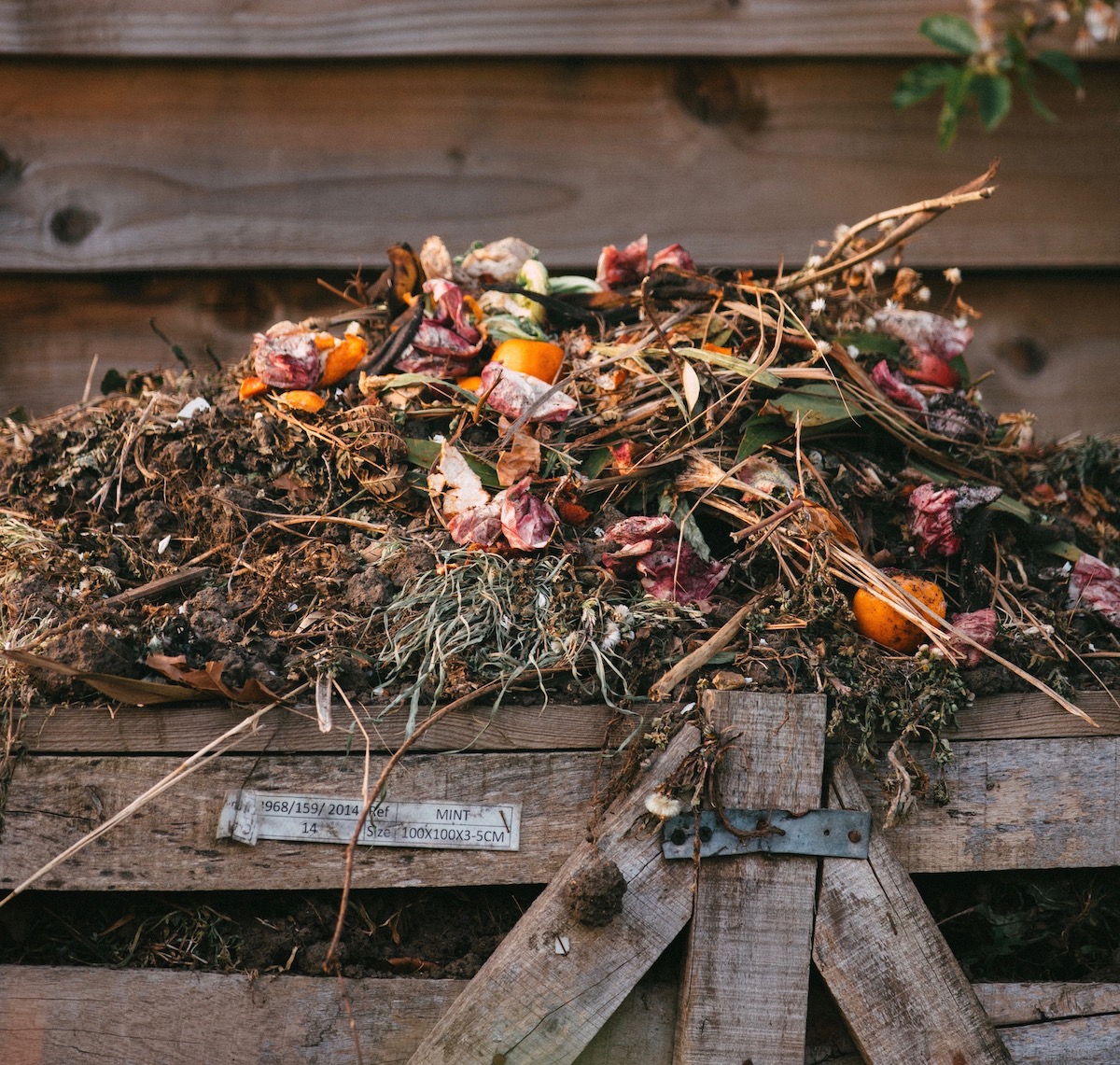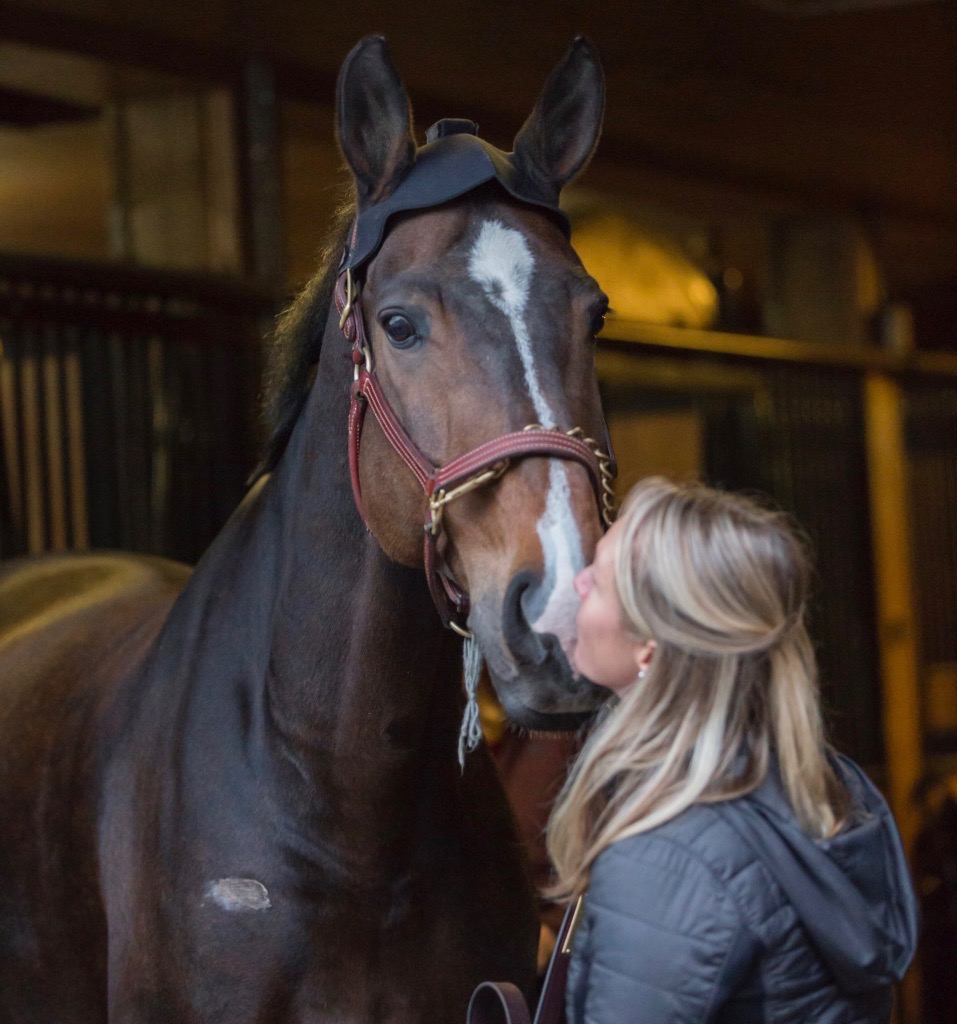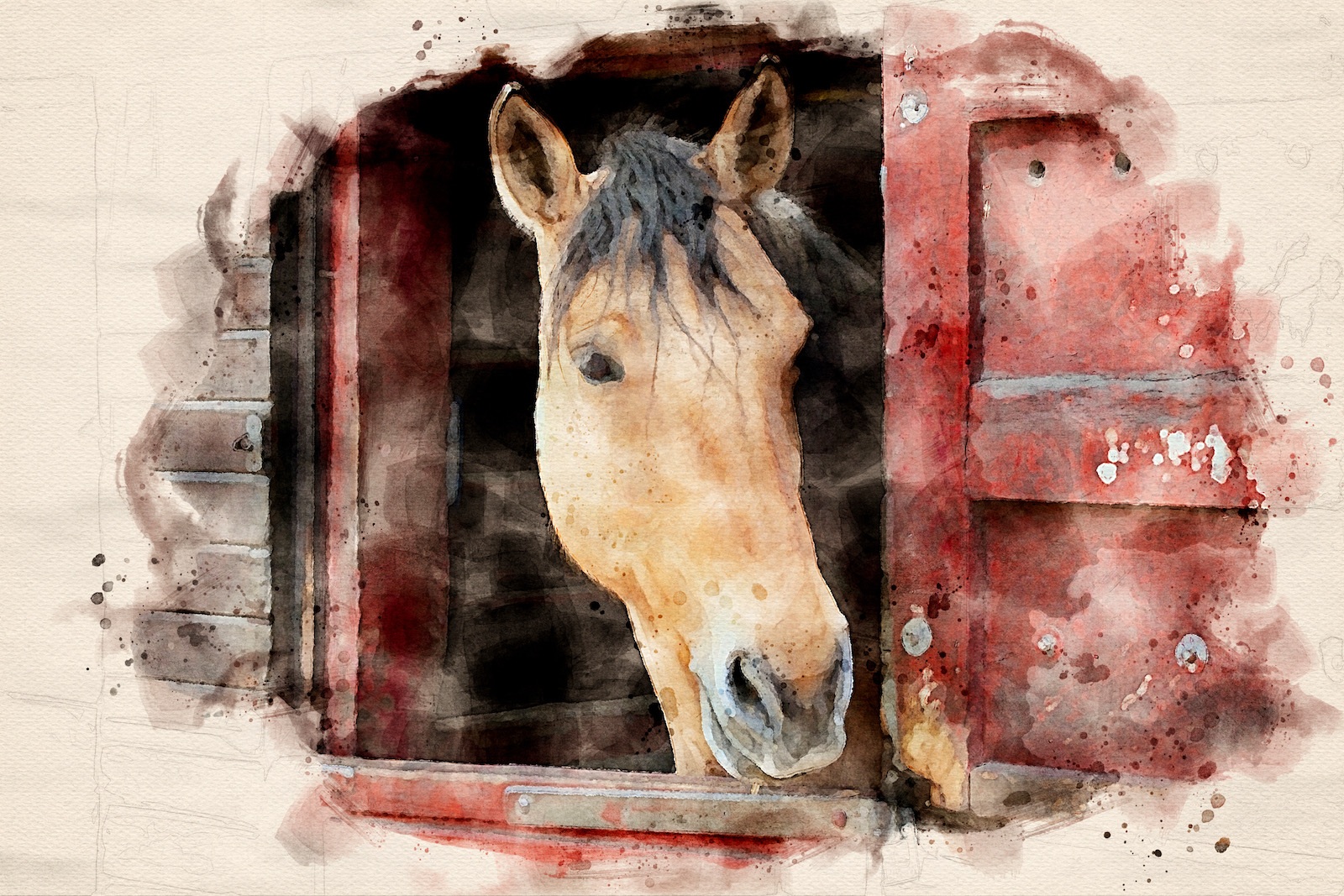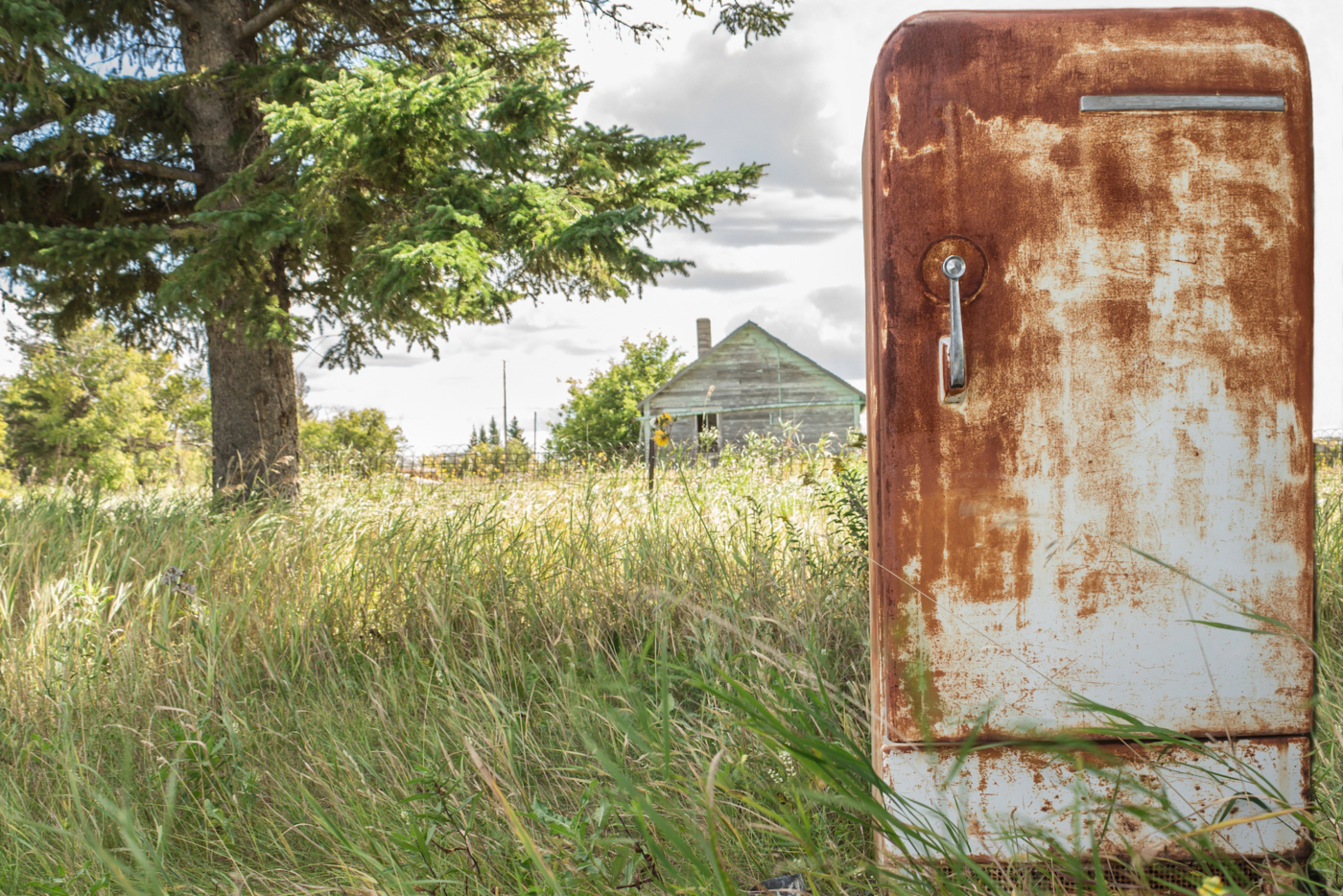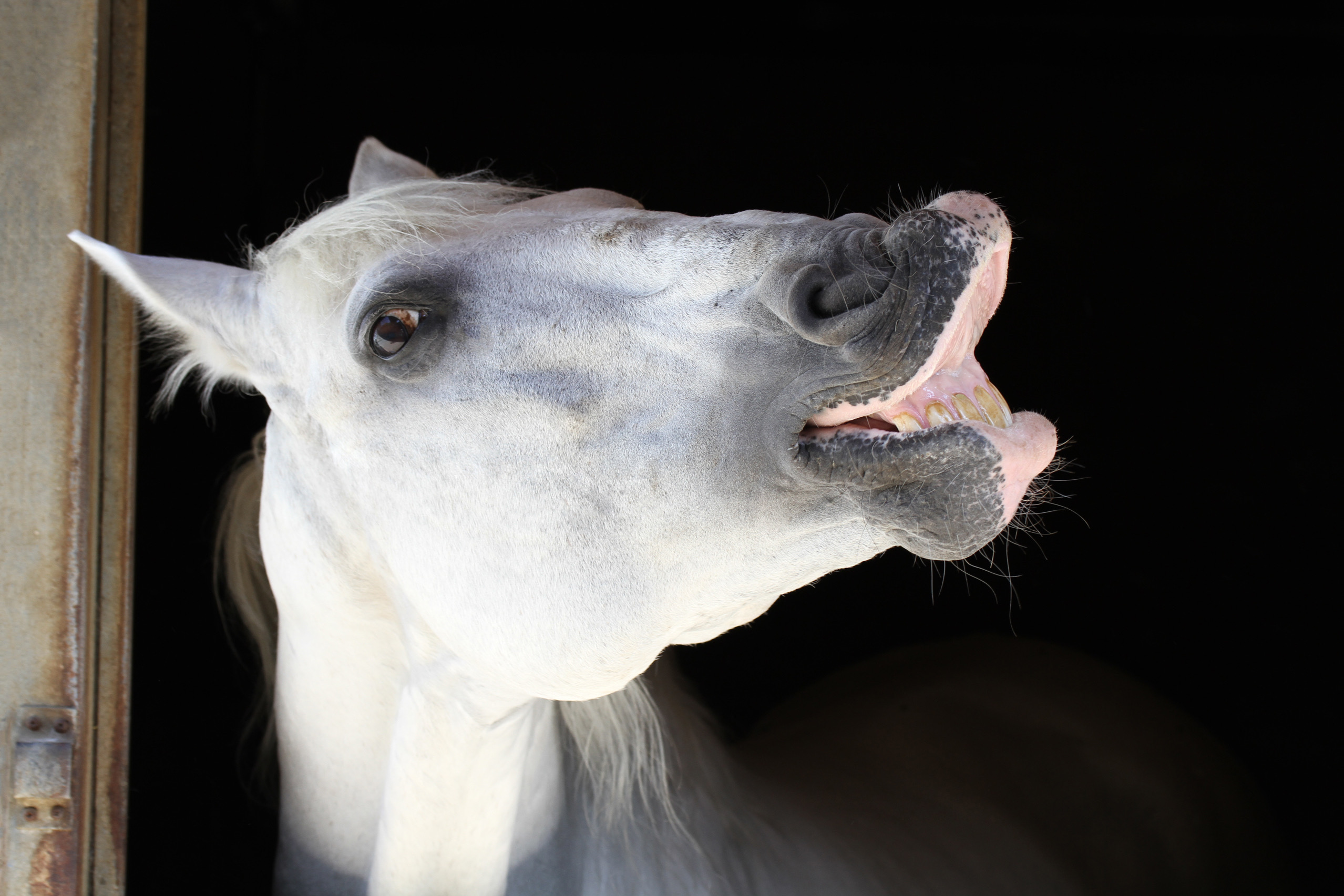Two days ago, The American Gold Cup kicked off in North Salem, NY with a roster of illustrious competitors — many of whom arrived directly from the FEI World Equestrian Games — guaranteeing a gripping week of showjumping. However, there is one industry standout in particular who is worth noting for his extraordinarily brilliant performance in Tryon last week, as well as the expectation that at this week’s Gold Cup he’d deliver a steady stream of adrenaline with every round.
Alan Wade is the mastermind behind many of the high-stakes courses that equine athletes and their riders navigate with courage, speed, and technical ability. It is course designers like Wade who decide just how much fight and finesse is required for show jumpers to deliver a clear round. A passionate horseman from Ireland who is modest and jovial in conversation, Wade has been designing courses since he was 12 (twelve!) years old. His sterling resume includes the CSIO 5* in Dublin for the past nine years, the Longines FEI World Cup Jumping Final, and that little thing called WEG that we mentioned above. Wade invited us into his office for a chat during a rare break in between classes at the show this week, where we discussed various elements of course design, learned about the impact of rail patterns and colors, and received some simple advice for building our own schooling courses at home.

Horse show days start early. Most horse shows start at 8am so we have to be on the grounds at 7am, so we’re normally up at sort of 5:30 or 5:45 in the morning, and basically work through the day. Whether it’s a heavy schedule or a light schedule, you go over the competitions and what you have to do and the weather and the grounds and other factors and then rebuild for the following day. Then I normally just go back to the hotel and rest and recover, and do it all over again the next day.
Do you have a team of people with whom you work consistently?
A lot of shows have good ring crews, most of which I have worked with. But the guys that are here with me today, they were with me for the last two weeks at WEG, so when I do bigger shows I like to have people I know and can trust. They don’t always agree with me, but that’s important! Some people come in and they don’t want to offer an opinion, whereas these guys are used to telling me their thoughts.
Can you provide an example of when you may have disagreed?
Well, it’s not really a disagreement, but something we’ll discuss. Like maybe in a jump-off, I try to get the first round really nice, but then you can get stuck in trying to get a nice jump-off. So then that’s when you need help, or to take a break and let someone else look at it with fresh eyes. It’s all about teamwork.
You seem very calm. Are there moments when you get frazzled or stressed?
Oh sure! I’m stressed often, but I keep a lot of it inside. I’ll give a hard time to my friends a lot more than the people I don’t know, because they know that it’s not really meant personally. It’s just to try and have a professional finished product. Even in the small classes we have the same care for detail, and try to have the fences looking as good as possible, whether you’re a superstar rider, or just there to ride 1.10m for fun. As a course designer we’re trying to present a product as good as we possibly can with the material we have available.

Do you get nervous before the first riders begin some of your harder courses?
Not really. They’re professionals and their horses are capable of jumping the courses, or else they wouldn’t have entered them — or at least that’s the way I feel. Sometimes you try to imagine how a course will ride or how a distance will ride and try to take the variables out of it. I’m pretty consistent that way. I don’t try to reinvent course designing. I know what I like and it’s gotten me a long way, so I try and go with that and don’t try to do something different just to be different. If a course is a 1.40m course I’ll build a solid 1.40 course. If it’s a 1.50m course I’ll build a solid 1.50, and let the riders and trainers make their own decisions about whether it suits the horses or their students or their clients or even themselves.
Are there any specific elements that scream “Alan Wade” in your courses?
Not really. I like a nice flowing line and something that makes sense. It might be a bit simple for some people, but I really like the use of liverpools and walls, and I like variety in a course. Sometimes you might have to put in a unique kind of fence — not to create faults — but to use different things for an overall better result. If I have the use of certain equipment at a show I will use it. Especially for young horses, I like including a lot of things, because if they do it once inside the ring it’s done and dusted. It’s often the riders that are more nervous normally with young horses, but I think if you teach them something in the show ring it’s a lot better for them than trying to teach them at home.
Do the riders communicate with you at all when you’re out there setting courses?
Yes, of course! Every rider has an opinion! It depends on what horses they’re riding that day and that class. That’s only normal, because they’d like something that would suit that horse in that class, and then the following day it might be a different thing. That’s why I try to be consistent and fair and I don’t do anything funky, so they know what horses to enter in what classes.
Do you have any nostalgia associated with specific courses? Or even a favorite?
I’ve been designing for a long, long time now, so I don’t have a favorite. I did enjoy Dublin, which I did for the first time in 2009. I liked that one. You always like to do your home show, and that was something that I was looking forward to, and all that’s happened since then has been a bonus.
Speaking of Dublin, is it difficult to handle all the travel that goes with the job?
The traveling that comes with course designing is a bit of a pain. I don’t really mind it, but it’s a bit of a drag sometimes. So you need to freshen up. After this week and next week I have about five weeks off, which will be good!
Is there any distinction between your work in Europe and your work here in the states?
No, it’s the same thing. I have the same principles I was brought up with when it comes to horses, and it’s the same list of things I go through in my head when I have a course, or even when I’m helping someone. It’s something that I’ve been taught, and my father was a very big influence, and he’d sort of go through a course and say left, right, change of reins, something that’s flowing but still difficult. Or when you get to the bigger levels, that they have to work to jump clear rounds, but still something that doesn’t get horses into trouble unless a big mistake happens.
 Do you have any input into the showjumping rules? Are there any that you find in need of change?
Do you have any input into the showjumping rules? Are there any that you find in need of change?
Not really. I have written letters to the committees over certain things. I am a big, big supporter of Nations Cup jumping. I think jumping for your country is the cornerstone of the whole thing. I love doing the Nations Cup! This year, apart from WEG, I did Dublin and Rotterdam, which were five star level, and another one in Portugal which was the three star level. But you feel the pressure from the riders, and then the excitement. Like when Mexico won in Dublin it was unbelievable, or when Ireland won in Portugal. And it was a lovely Nations Cup in Rotterdam. It just brings something more to the table than individual Grand Prix—man against man or man against woman. It’s a special competition.
We know that the welfare of the horses is paramount to you, so will you talk a bit about how that plays into your designs?
If there’s something that looks funky when I’ve built it I’ll change it. I keep the normal stride patterns, and then I’ll change it a little bit so it’s a little short or a little long. But I’ve been doing this quite a long time, and when people walk it and they say it’s easy and it’s nice, that’s fine, because a lot of the time what transpires is that it will ride a little bit harder than what they feel it might. At the top level now what you really need is material. You need color change; you need different types of material. That was a great thing about the team last week [at WEG] — we had a bit of a different look than what you would see at a normal show. We had lots of different colors that we had worked on, and fences that we’d worked on for a long time, just to get something new and something fresh. I feel that colors do create different problems for the horses. Experts say horses are basically colorblind, but they do seem to have preferences for colors, and some colors definitely jump out at them more than others.
We’ve heard yellow jumps a little harder?
Yes, it used to be, but now we’ve moved on to pastel yellow. Pastel blues as well, and some of the softer colors. But if it is a young horse class you need to be very careful. If any pole has a stripe on it, it jumps easier. So with young horse classes you wouldn’t be playing around with the solids or pastels, but when you get to the top level it’s a different thing. You do have solid color rails and pastels — especially on grass, the pastel yellows and greens jump higher.
Do you have any advice for a rider who is putting a course together at home?
Keep it simple. Most of it is a figure of eight. If you can do a figure of eight then you can’t go wrong. When I design I start from figures of eight, and I tell the guys if they ask for advice to keep it simple, keep it flowing, left, right, left, right.
Okay so you’ve traveled all over the world. Where would you like to visit that did not involve a horse show?
I like the west coast of Ireland. I haven’t gone on many holidays but I’ve gone to the west coast of Ireland and I find it very relaxing.
Is there anything that we don’t know about you that you’d like to share?
I’m a great follower of hurling. Hurling is very popular in Ireland. It’s one of our national sports. It’s a really fast game. I’m from Tipperary, which is actually the home of hurling. If you ask most of the Irish guys, they all support their county or the region they’re from. Every year you support your county through the hurling championships. So that would be something that’s a complete break for me. It’s a bit like college football over here – you were born in that place so you get a little fanatical about it.
Photo Credit: Phelps Sports


